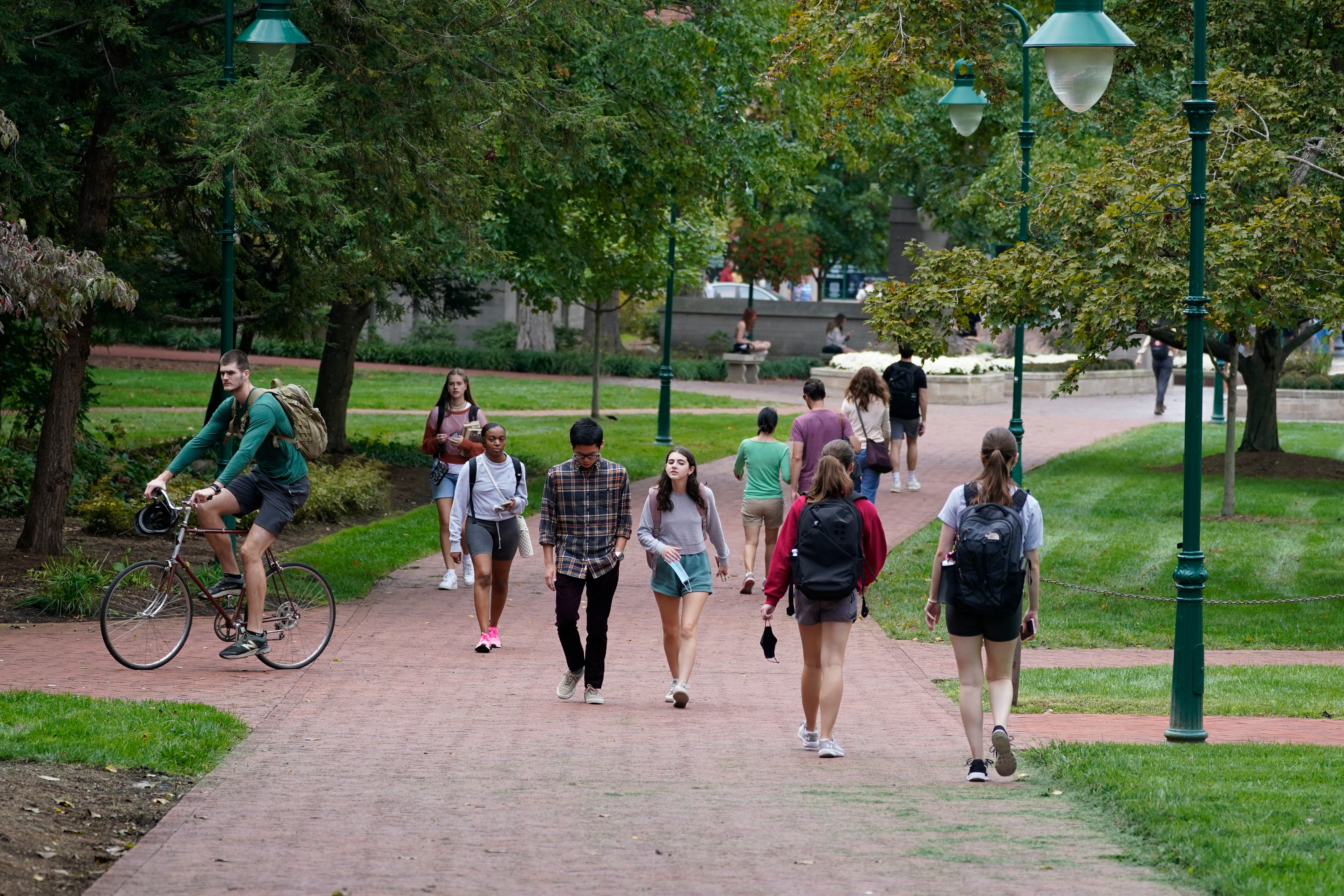Millennial Money: Skipped college in 2021? Enroll this fall
Between fall 2019 and 2021, college enrollment nationwide fell by nearly a million students — and for a number of financial reasons, this fall is an ideal time for students to resume their education to attain a degree or credential

The pandemic upended what it meant to be a college student as newfound barriers to learning cropped up in spring 2020: In-person classes were forced online, family obligations became more pronounced and economic difficulties spread.
“All of these factors just came together to create this perfect storm,” says Mamie Voight, president and CEO of the Institute for Higher Education Policy, a nonprofit focused on college access. She says that students from low-income backgrounds and those with responsibilities outside of school — like jobs and kids — faced the steepest challenges.
There were 5.1% fewer students enrolled in fall 2021 than fall 2019 , according to estimates from the National Student Clearinghouse Research Center. And between fall 2019 and fall 2020, the percentage of students who reenrolled fell the most since 2009.
Yet, it may be time to return, especially if you had to sit out any of the last two years. A strong job market and earnings increases for low- wage workers can, at face value, make higher education less appealing. But the long-term picture remains clear.
Those with no college education see median lifetime earnings of $1.6 million, according to the Georgetown University Center on Education and the Workforce. That’s $1.2 million less than the $2.8 million of median lifetime earnings for those with a bachelor’s degree. The median associate degree holder sees lifetime earnings of $2 million.
“For students, the answer is pretty clear that going to college is a better choice economically, than not going,” says Voight. “And reenrolling, if you stopped out … will make a world of a difference in terms of job opportunities and wage growth over a person’s lifetime.”
The longer you wait to go back, the less likely you are to attain a degree, according to the National Student Clearinghouse Research Center. And for those who have delayed going to college, it comes with a cost: The Federal Reserve Bank of New York estimates that postponing college for a year results in a potential $90,000 loss in lifetime earnings.
Although the difficulties of the pandemic haven’t disappeared, colleges have become better equipped to help students overcome barriers.
COLLEGES HAVE ADAPTED TO NEW EXPECTATIONS — AND NEEDS
Students have returned to campuses, but many colleges are keeping the changes they’ve made.
Community and four-year colleges have adjusted to better reach students, says Matt Bergman, an associate professor of organizational leadership at the University of Louisville.
“We have so many opportunities for students to come back in ways that they wouldn’t have been able to as recent as five years (ago),” adds Bergman, who studies adult learning and degree completion.
Course offerings have become more flexible, with in-person and virtual classes and also hybrid formats, Bergman says. They’re also becoming available in synchronous (learning with a class) and asynchronous formats (learning at your own pace).
Community colleges made many changes to meet the needs of their students, according to Martha Parham, the senior vice president of public relations for the American Association of Community Colleges. These lasting transformations can make it easier for students to return to school.
“I do think the pandemic has changed the landscape in the course offerings and that change is going to stick,” Parham says. “So that looks different in different places, in different students, in different colleges, but a lot of services and programs were put into place to ensure student success at every level.”
SUPPORT FOR STUDENTS IS OUT THERE
This fall, college students have more federal financial support available than in years past.
The annual maximum Pell Grant, aid you don’t have to repay, has increased $400 to $6,895 for the coming academic yea r. Pell Grant eligibility is determined by your financial situation and the cost of attendance at the institution you’re considering. To be eligible, you need to submit the Free Application for Federal Student Aid, also known as the FAFSA.
Many colleges also have more financial resources available than in years past, thanks to $76.3 billion in federal pandemic assistance funds provided to institutions across the nation.
“Right now, in particular, is a great time to go to community colleges because they have a lot of resources that are directly available to students,” says Parham, including funding for tuition and books, transportation, food and housing assistance, and technology.
If you need child care, pick the school that offers it, Bergman says. If you have work experience, look for colleges that offer prior learning assessments, giving you college credit for the skills you’ve gained. The important thing is to pick a school that best fits your needs, Bergman adds.
Finding the right school can be as easy as visiting a school’s website or calling the admissions office to ask about the resources they offer.
Application deadlines for fall have largely passed at four-year colleges, but you can often enroll in community college shortly before the semester begins. If a bachelor’s degree is your goal, going to community college, then transferring can save you money — but be careful to plan out your classes to make sure the credits transfer to a bachelor’s degree-granting institution.
_____________________________
This column was provided to The Associated Press by the personal finance website NerdWallet. Colin Beresford is a writer at NerdWallet. Email: cberesford@nerdwallet.com. Twitter: @Colin_beresford.
RELATED LINKS:
Why Choose a Community College and How to Enroll https://bit.ly/nerdwallet-what-is-a-community-college